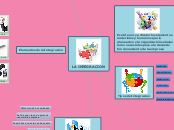Docente: Ana Carrillo
Let´s write a story
Actividad/ Nombre: A1 Redacción de una historia (a elección)
Objetivo: Redactar una historia siguiendo el formato básico y las características principales para escribir efectivamente.
Descripción: El alumnado de manera individual, redactará una historia (200-300 palabras) siguiendo el formato indicado en la presentación (Start, Middle and End) y las características cubiertas. Se puede hacer uso del ordenador, con conexión a Internet, para buscar ideas y redactar en programa Word o similar. Una vez completada la actividad, enviar como: A1 nombre y apellidos, a anadocente@milaulas.com
Medios / Recursos: Ordenador con conexión, programa de edición (Word o similar) bolígrafo y papel (para anotar ideas o borrador, si se prefiere)
Tiempo: 1.15 horas
END
OUTCOME
This is the closure section of the story.
The reunion
CLIMAX
This is the moment when the main character passes by the last obstacle and finally faces its great challenge.
The Rescue
Running Away
WHO IS WHO?
The ugly
Bring others down
Critical
Envious
INFJ - The envious one
The bad
Motivated by own gain
Selfish
Self-centered
INTP - The Logician
The good
Character's name
Type in the name of your character.
Doing good
Main goal
What is your character's main goal?
fight Evilfind lovedefeat his/her enemyrule the worldmake friendstime travelmake an awesome discovery
Well Behaved
High Achiever
Character traits
Which traits best describe the character's personality?
introvertedloyalkindindependentquick-thinkingadventuresomeidealisticsweet-naturedcalmrisk-takercreativewittystrictfussyweirdclumsyharshaggressivecarelessclingingcowardlycrueldeceitfulimpulsive
ENFJ "The Hero"
Type of character
Decide what type of character he/ she is.
Protagonist (main character): Harry PotterAntagonist (main character's opponent): Lord VoldemortFlat (stereotypical character): Mr. Filch from Harry Potter sagaRound (his/ her personality develops throughout the story): Hermione GrangerStatic (his/ her personality doesn't evolve throughout the story): Professor McGonagollDynamic (dramatical change in personality): Neville LongbottomConfidant (the main character trusts him/ her): Ronald WeasleyFoil (contrasting character who enhances the personality of another character): Draco Malfoy
SETTING
Feeling Cold
Sensory details are important because they create depth in your setting. Choose the aromas, sounds, sights, things related to touch, smell and taste.
smell of fresh breadscent of freshly cut grassrain falling onto the windshieldbirds singingfluffy cloudsrural hillssticky honey on the tableclothstinging moustacheOther
Weather
The weather is an important element in your story because it can highly influence the ambience in the story and the mood of the characters.
Season
Each season has unique weather and events, whose description can also enrich your text.
SpringSummerAutumnWinterOther
Time
What time of the day does the story takes place?
dawnmorningafternooneveningduskmidnighttwilightbreakfastlunchdinnersunrisesunsetfull moonOther
Where?
Your story can take place wherever your imagination will take you to.
in a hospitalinside a carat the cinemain a restaurantat the zooin spacein an elevatorin an enchanted forestin the palm of your handin a haunted palaceinside an aquariumAncient GreeceBermuda TriangleOther
Once upon a time
When I grow up I want to be...
To name your story, you have to think of the overall message and what you want your audience to understand from the story. Also, make it relevant and easy to remember. Examples:
- theme: Audition, by Barbara Walters;
- main character's name: Robinson Crusoe, by Daniel Defoe;
- use of gerund to describe the plot: Waiting for Godot, by Samuel Beckett;
- time or numbers: 1984, by George Orwell;
- line that best describes the theme: Pride and Prejudice, by Jane Austen;
- key object or possessive in the story: Charlotte's Web, by E.B. White;
- story setting: Twenty Thousand Leagues Under the Sea, by Jules Verne
START
MIDDLE
OBSTACLES
There wouldn't be any tension and excitement in your story if there weren't any obstacles that get in your character's way.
Have to conquer all
Usually, the obstacles come in sets of three. This way, your story can evolve and be exciting for your audience.
can't swim very well, shark invasion, sea stormstrong allergy to dogs, pack of wolves, hunters invasionloses coin, finds coin but it is soon stolen, hard time deciding whether to return or not to his real lifereceives medication, fight with dangerous patient, someone reveals his escape planmemory loss, no support from family, the game takes place earlier than expectedOther
CHALLENGE
Each story has a main character and that character usually needs to solve a problem or challenge.The character's challenge is the one that creates tension throughout the story.
Nightime soon!
Type in any other challenges which the main character or other characters in the story need to face.
MOTIVATION
Your character(s) need(s) motivation in order to solve the challenge(s).
Want to go home!
Why does your character need to confront this challenge? What does he/she expect to accomplish by solving it?
will marry in 3 dayshe/she loves the childcan fix the mistakes in the pastwants to help other misplace patients escapechance to win the World Chess ChampionshipOther
Lost in the city
Try to come up with an interesting challenge with which the character needs to struggle.
wakes up one morning in the middle of the oceandiscovers that his/her child turns into a werewolf at nightis sent back in time after rubbing an old coinis misplaced in a mental institutionbecomes blind before the most important game in his careerOther









